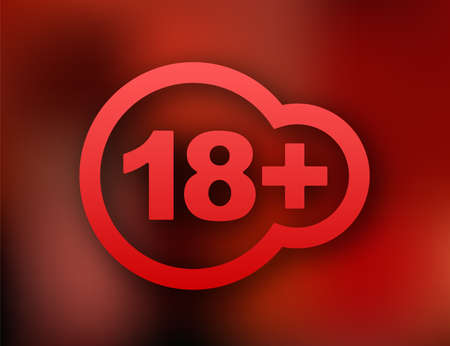Introduction to Numerology in British Culture
Numerology, the study of the mystical significance of numbers, has a surprisingly rich and varied history within British culture. While its origins can be traced back to ancient civilisations such as Egypt, Babylon, and Greece, numerology found fertile ground in Britain through centuries of spiritual exploration and intellectual curiosity. In the Middle Ages, numbers were woven into the fabric of religious practice and architecture, with cathedrals and churches constructed according to sacred geometries believed to connect earthly structures with divine order. Over time, numerological concepts seeped into folklore, literature, and even everyday superstitions—think of the enduring British wariness of the number thirteen or the luck associated with seven. Today, numerology continues to intrigue Britons from all walks of life, influencing everything from personal beliefs to the analysis of historical events and famous partnerships. This enduring fascination reveals how deeply numbers are interlaced with British tradition and collective consciousness.
2. Numerology and the Monarchy
Throughout British history, numerology has quietly threaded its way through royal partnerships and the reigns of influential monarchs. While not always overtly discussed, numbers have often been seen as holding a deeper significance, shaping decisions and interpretations surrounding the monarchy. This section delves into some notable examples where numerological readings have been applied to both partnerships within the royal family and individual rulers.
The Power of Royal Partnerships: Numbers Behind the Thrones
Numerologists often analyse the names and birthdates of royal couples to uncover patterns that might explain their dynamics or the fate of their union. For instance, the life path numbers derived from full birth dates are believed to reveal core traits and compatibilities. Below is a table showcasing some celebrated British royal partnerships and their corresponding numerological insights:
| Royal Partnership | Combined Life Path Numbers | Numerological Interpretation |
|---|---|---|
| Queen Victoria & Prince Albert | 3 (Victoria) + 7 (Albert) = 1 | Unity and leadership; a partnership symbolising new beginnings for an era. |
| King George VI & Queen Elizabeth (The Queen Mother) | 4 (George VI) + 8 (Elizabeth) = 3 | Creative resilience; their partnership saw Britain through World War II with optimism. |
| Queen Elizabeth II & Prince Philip | 7 (Elizabeth II) + 1 (Philip) = 8 | Karmic strength; enduring commitment through public service. |
The Influence of Individual Monarchs’ Numbers
Apart from partnerships, individual monarchs personal numbers—especially their life path and destiny numbers—have also been examined for clues about their reigns. For example, King Henry VIII’s life path number is said to be 1, associated with ambition and assertiveness, reflecting his break from Rome and establishment of the Church of England. Similarly, Queen Elizabeth I is often linked with the number 5, denoting adaptability and independence, which fits her reputation for diplomatic agility in a turbulent era.
Cultural Resonance in Modern Britain
While contemporary royals may not openly consult numerologists, British culture retains a quiet fascination with symbolism and tradition. Public interest peaks during major royal events—weddings, coronations, jubilees—when newspapers occasionally reference lucky numbers or auspicious dates. This ongoing intrigue suggests that numerology continues to offer an alternative lens for understanding the personalities and partnerships that shape the monarchy’s legacy.

3. Political Partnerships Decoded by Numbers
When exploring the impact of numerology on British political history, the relationships between key leaders offer intriguing case studies. The partnership between Winston Churchill and Clement Attlee, for example, shaped the nation during and after World War II. Despite their differing backgrounds and political ideologies, their collaboration was marked by mutual respect and a shared commitment to national stability. If we examine their birth dates using traditional numerological techniques, Churchill’s life path number—calculated from his birth date—suggests leadership and resilience, while Attlee’s indicates adaptability and diplomatic skill. Numerologists might argue that these numbers complemented each other, providing the energetic balance needed for effective wartime governance.
Similarly, the dynamic between Tony Blair and Gordon Brown dominated British politics at the turn of the millennium. Their partnership was famously complex—sometimes harmonious, often fraught with tension. According to numerological analysis, Blair’s numbers emphasise charisma and vision, qualities that propelled him as a public figure. Brown’s numbers suggest depth, caution, and analytical prowess; traits essential for policy development but sometimes at odds with Blair’s more immediate style. In this light, numerology offers a framework to interpret not only the public outcomes of these partnerships but also the underlying dynamics that shaped decision-making at the highest levels.
While mainstream historians may view such interpretations with scepticism, it is worth noting that numerology has long been used in Britain as a tool for self-reflection and understanding interpersonal relationships. By decoding famous political duos through their core numbers, we gain fresh insight into how personal energies—however intangible—may have influenced some of Britain’s most significant moments.
4. Creative Collaborations: Literary and Artistic Pairs
When considering the influence of numerology on British history, it is both fascinating and practical to explore how numbers might have played a role in shaping iconic artistic partnerships. The United Kingdom has given rise to some of the world’s most renowned creative duos—Lennon & McCartney in music, and Gilbert & Sullivan in operetta. In this section, we adopt an experimental and engineering-inspired approach to see whether numerological analysis offers insight into the chemistry behind these collaborations.
Numerological Breakdown of Famous Pairs
To examine these partnerships, let’s assign each individual their core numerology number, typically calculated from their full name or date of birth. Then, by summing or comparing these numbers, we can attempt to reveal hidden dynamics or compatibility factors according to established numerological principles.
| Partnership | Birth Name Numbers | Sum/Relationship | Numerological Interpretation |
|---|---|---|---|
| Lennon & McCartney | Lennon (John Winston Lennon): 7 McCartney (James Paul McCartney): 6 |
7 + 6 = 13 → 1 + 3 = 4 | The number 4 is often associated with foundation and building. This might reflect their role in constructing the enduring legacy of The Beatles. |
| Gilbert & Sullivan | Gilbert (William Schwenck Gilbert): 5 Sullivan (Arthur Seymour Sullivan): 9 |
5 + 9 = 14 → 1 + 4 = 5 | The number 5 is linked to creativity and adaptability, fitting for a pair known for wit and inventive musical theatre. |
A Cultural Perspective on Numerological Pairings
In the British context, such analyses are often met with curiosity rather than credulity. While few historians would credit numerology as the driving force behind these legendary partnerships, the exercise can serve as a playful yet structured method for reflecting on what made these collaborations work so well. It also provides an alternative framework for discussing how personalities and creative energies align—a topic of perennial interest in British arts discourse.
Engineering Parallels: Structure and Innovation
If we treat creative partnerships like engineered systems, numerology becomes one lens through which to analyse structure (compatibility) and output (success). Whether you see these numerical connections as meaningful or coincidental, they offer another data point in our ongoing attempt to understand what makes certain British collaborations both historic and uniquely effective.
5. Controversial Figures and their Numerological Narratives
Throughout British history, certain partnerships have not only shaped the nation but also sparked heated debates—both in their time and in ours. By examining the numerological profiles of these contentious or transformative duos, we can uncover hidden layers behind their alliances and conflicts, perhaps even reframing our understanding of their legacies.
The Churchill-Chamberlain Dynamic: A Tale of Contrasts
The relationship between Winston Churchill and Neville Chamberlain has long been a subject of scrutiny, with their divergent approaches to leadership during wartime Britain. Numerologically, Chamberlain’s numbers suggest a preference for balance and diplomacy, whereas Churchill’s figures reveal determination and resilience. Analysing the sum of their birthdates and names highlights a partnership marked by friction, yet one that ultimately catalysed national transformation—a reminder that even clashing energies can serve a higher collective purpose.
The Royal Brothers: William and Harry
Modern royal history offers its own controversial pairing: Princes William and Harry. The public has watched as their paths diverged, each embodying distinct values and attitudes towards tradition. In numerology, William’s numbers emphasise stability and duty, while Harry’s reflect change and humanitarian impulses. Their combined numbers point to a karmic lesson about unity through diversity, suggesting that their differences may well serve as a catalyst for wider discussions about monarchy in contemporary Britain.
Political Partnerships: Thatcher and Heseltine
No account of British controversy would be complete without referencing Margaret Thatcher and Michael Heseltine. Their often-tense partnership during the Conservative government’s turbulent years provides fertile ground for numerological analysis. Thatcher’s dominant numbers align with authority and conviction; Heseltine’s chart is marked by adaptability and reformist zeal. The numerical interplay here sheds light on their infamous clashes—numbers underscoring both creative synergy and inevitable discord.
Reframing Historical Debate through Numbers
By applying numerology to such polarising pairings, we are invited to reconsider old narratives—not as fixed judgements but as evolving stories shaped by underlying energies. This experimental approach does not claim to replace rigorous historical scholarship, but it offers an alternative framework: one where numbers serve as a bridge between personalities, events, and the shifting tides of public opinion in Britain.
6. Contemporary Relevance: Numerology in Modern Britain
Numerology, while deeply rooted in British history, continues to intrigue and influence modern society across the UK. Today, its presence is felt not just among spiritual enthusiasts, but also in everyday conversations, the media, and even among public figures. For instance, some politicians and celebrities have been known to quietly consult numerologists for career decisions or relationship guidance—reflecting a subtle but persistent curiosity about what numbers might reveal. In relationships, especially among younger generations, numerology apps and social media trends have made it fashionable to calculate “compatibility numbers” or explore personal destinies using birth dates. This echoes historical precedents where partnerships—be they royal marriages or literary collaborations—were often retrospectively analysed through the lens of numbers. The enduring fascination may be partly due to Britains long-standing appreciation for tradition blended with a penchant for the quirky and mysterious. Even sceptics are often drawn in during moments of uncertainty, finding comfort or entertainment in these numerical interpretations. Whether used as a tool for self-reflection or simply as a conversation starter at dinner parties, numerology continues to carve out its niche in British culture. Ultimately, its ongoing relevance lies in its adaptability—allowing each new generation to reinterpret old beliefs through contemporary eyes while keeping alive the peculiar charm that has defined numerology’s role throughout British history.
